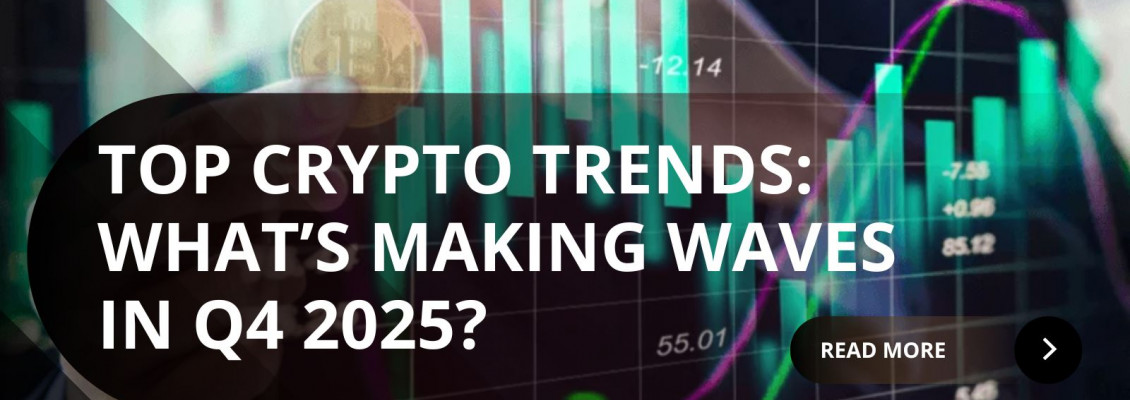
As Q4 2025 begins, the crypto market is rebounding from a volatile October and refocusing on the narratives that could shape the next growth cycle. Prices are important, but what truly drives long-term adoption are the innovations being built into the ecosystem. Three themes are standing out this quarter: smart contract security, restaking, and real world asset (RWA) tokenization.
Smart Contract Security: From Weak Link to Foundation
For much of crypto’s history, security was an afterthought. Hacks like the DAO, Ronin Bridge, and dozens of DeFi exploits cost investors billions and gave skeptics ammunition to dismiss the industry. But in 2025, security has moved to the center of the conversation.
-
Why it matters now: This year alone, billions have been lost to contract exploits. With institutional money flowing into crypto, tolerance for poorly written code is at zero. Safe protocols are the only protocols that will attract major capital.
-
How the industry is responding:
-
Auditing firms such as CertiK and Trail of Bits report record demand.
-
Protocols are funding generous bug bounties to encourage responsible disclosures.
-
Formal verification methods are being used to mathematically prove code safety before launch.
-
-
Implications: Stronger security lowers the risk of catastrophic loss and boosts user trust. For institutions, it is a prerequisite for deploying significant funds. For users, it makes DeFi more approachable and reliable.
Bottom line: Security is no longer just about preventing hacks, it is about enabling the next wave of adoption.
Restaking: One Deposit, Multiple Rewards
Ethereum’s transition to proof of stake unlocked a new design space. If ETH can be staked to secure the network, can that same stake also secure other protocols? This is the idea behind restaking.
-
How it works: With platforms like EigenLayer, staked ETH (or derivatives like stETH) can be pledged again to secure additional protocols. The same collateral supports multiple systems.
-
Why it is attractive: Restaking offers stacked yields. Investors earn staking rewards from Ethereum plus additional returns from other protocols.
-
Risks: The very efficiency that makes restaking appealing also makes it dangerous. If multiple systems depend on the same collateral, failures could cascade across DeFi.
-
Momentum: EigenLayer has attracted massive inflows, and copycats are emerging. Restaking is quickly becoming a new DeFi primitive, with growing adoption from yield-seeking investors.
Bottom line: Restaking boosts capital efficiency and creates new income streams, but it also raises systemic questions that the market will need to answer.
RWA Tokenization: Bringing the Real World On-Chain
Perhaps the most exciting long-term trend is real world asset (RWA) tokenization. The idea is simple: use blockchain tokens to represent traditional assets such as government bonds, real estate, commodities, or even carbon credits.
-
Why it matters: Tokenization connects crypto with the trillions of dollars in traditional finance. Instead of betting on volatile altcoins, investors can hold stable, yield-bearing assets on-chain.
-
Momentum in 2025: Tokenized U.S. Treasuries have already reached several billion dollars on public blockchains. BlackRock and other large institutions are experimenting with tokenized funds.
-
Potential beyond bonds:
-
Real estate tokenization could unlock fractional ownership.
-
Trade finance tokenization could streamline cross-border payments.
-
Commodities and energy markets could gain new liquidity via on-chain representation.
-
-
Challenges: Legal clarity around ownership, custody, and compliance remains uneven. Liquidity is also inconsistent across platforms.
Bottom line: RWA tokenization could be the bridge that finally brings traditional institutions into DeFi in a meaningful way.
The Bigger Picture
These three narratives complement each other:
-
Security builds trust and protects capital.
-
Restaking enhances capital efficiency and incentivizes participation.
-
RWA tokenization integrates crypto with the real economy.
Taken together, they suggest a maturing market that is laying down structural foundations, not just chasing speculative cycles.
The Final Word
Q4 2025 may be remembered not only for market rebounds but also for the narratives that shaped the industry’s path forward. Smart contract security is turning DeFi into a safer place to build. Restaking is pushing capital efficiency to new heights. RWA tokenization is opening the door for traditional institutions to step into crypto.
If these themes continue to gain traction, they could define the next chapter of adoption — one built on trust, efficiency, and real-world integration.

Leave a Comment